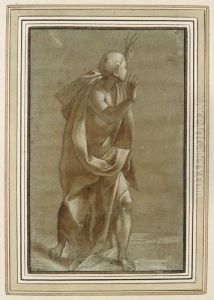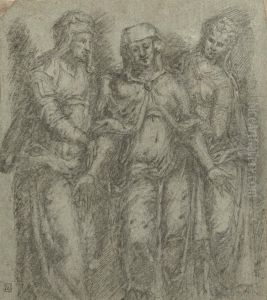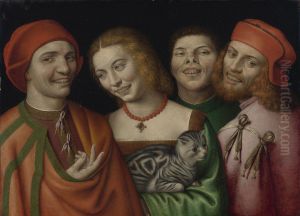Gian Paolo Lomazzo Paintings
Gian Paolo Lomazzo was an Italian painter, writer, and art theorist who played a significant role in the art world of the sixteenth century. He was born in Milan in 1538 and became a prominent figure in the Milanese artistic community. Lomazzo's painting career was marked by his work in the Mannerist style, which was characterized by its artificial elegance, elongated figures, and often complex compositions. His paintings often featured religious themes and allegorical subjects. Unfortunately, his painting career was cut short due to a serious illness that led to blindness around the age of 33.
Despite his disability, Lomazzo's influence on art persisted through his written works. He became a prolific writer on art theory and criticism, penning important works such as 'Trattato dell'arte della pittura, scoltura et architettura' (Treatise on the Art of Painting, Sculpture, and Architecture) in 1584. This treatise is considered one of the most significant art theoretical works of the period and is notable for its systematic approach to the analysis of artistic techniques and aesthetics. Lomazzo's treatise covers a wide range of topics, from the use of color and composition to the emotional and symbolic aspects of art.
Lomazzo's other notable written contribution is the 'Idea del tempio della pittura' (Idea of the Temple of Painting), in which he presents his vision of an ideal artistic community. He also wrote biographies of contemporary artists, which are valuable historical resources today. His writings reflect a deep understanding of the artistic practices of his time and had a considerable impact on later art theorists and historians.
Gian Paolo Lomazzo remained an influential figure in Milan until his death in 1600. His legacy as a theorist has often overshadowed his contributions as a painter due to the lasting impact of his written works. Lomazzo's treatises provided a conceptual framework for the understanding of art that resonated with the intellectual currents of the late Renaissance and have continued to be of interest to art historians and scholars to this day.


